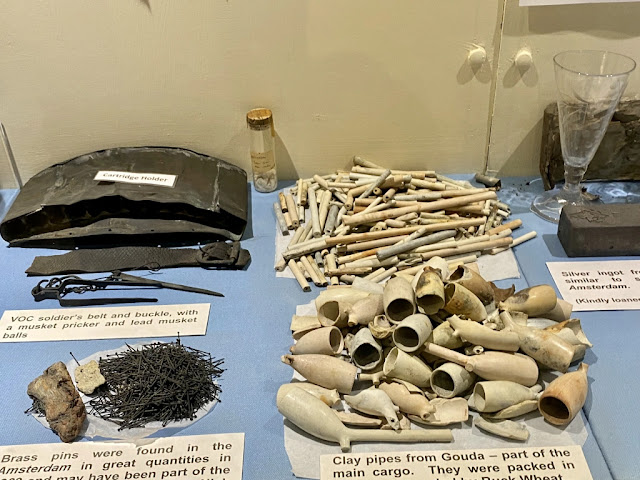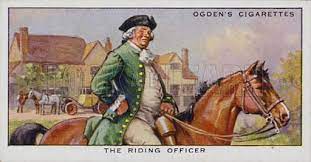The story of the Wreck of the VOC Ship The Amsterdam, Bulverhythe, Hastings, East Sussex.
The story of the Wreck of the VOC ship The Amsterdam, Bulverhythe, Hastings, East Sussex.
The story of the VOC ship the Amsterdam is one of movie proportions, However, I do hope Hollywood never get the rights to make it ! But it is still surprising a film has never been made ! The story takes on a three month maiden voyage of the VOC mirror ship (East Indiaman) the Amsterdam. There are some technical pronunciations and titles I need to explain to the reader of this blog. Lets start with the abbreviation VOC. The abbreviation VOC stands for Verenigde Oostindische Compagnie (VOC) or in English, United East India Company. A mirror ship in short term is a ship owned and sailed by the VOC that took currency such as gold, silver, raw materials and soldiers to Batavia and other parts of the Dutch empire. Then returned with the purchased goods to the Netherlands.
The Amsterdam was completed in 1748 and was captained by 33 year old Willem Klump with two hundred and three crew. One hundred and twenty seven soldiers and five passengers. The Amsterdam had a displacement of one thousand one hundred tons. She had forty two guns, her height was 183.7feet, length 157.5 feet, width (beam) 38 feet and draught 18 feet. The draught is the height of the hull that clears the seabed. A large vessel by 18th century standards and set for an eight month voyage to today's Indonesia.
The Amsterdam was built in Amsterdam and then sailed to to Texel Island by a skeleton crew. From Texel Island She was loaded and the rest of the crew joined her by ferry. The crew would have been sullen and sickly as the Crimps (Press gang) kept them in squalid conditions for months befores sailing (p20, wreck of the Amsterdam, Marsden 1985) and passengers including her Captain Willem Klump joined her. Preparations were made and then She set sail from Texel on the 15th of November 1748.
She ran straight into problems with a storm and She ran aground on the other side of Texel Island. The crew were demoralized as they then spent Christmas on board with the city of Amsterdam in view and it was not until the prevailing wind got her under way again on the 8th of January 1749. The Amsterdam picked up speed quickly and passed the downs ( the Downs being the safer part of the Goodwin sands, the off shore harbour and nautical reference point Deal, Kent) the next day. She sailed with a fleet of Dutch ships and out ran most of them. The Amsterdam was now well on her way......
It was on the 20th of January 1749 that the Amsterdam and Klump with his crew ran into trouble. A violent storm started and Klump pulled out his VOC charts which told him to take shelter in Pevensey bay. It was thought that the cliffs would offer a safe haven until the storm broke.Klump started to edge into Pevensey bay on the 23rd of January 1749. The Amsterdam got stuck between two waves and her rudder hit the sea bed, which resulted in the rudder breaking off. As the storm grew worse, Klump could see Bexhill through the rain and wind, He ordered the crew to drop anchor.
The realisation of Klump's dilemma would have been the never ending hell, the crew started to die at an average of five men a day because of malnutrition by the crimps and not helped by the squalid conditions on board. At the same time the villages of Bexhill, Bulverhythe and Hastings looked on. Klump may or may not have realised there were two industries that fed these south coast villages, one was fishing and the other was smuggling, the villagers looked on in the bay at the spectacle, speculating what would happen next to the vessel.
On Sunday the 26th of January 1749, the gale intensified and with morale broken, evidently there may have been a mutiny (on the excavation two fired musket balls were recovered in 1969) Gin and Wine were broken into and freely flowing, Klump must have given into the demands of the justified mutineers to beach the ship. He waited for High tide, either weighed anchor or cut the cable. A temporary rudder was made and her cannons were fired as a distress signal.
The Amsterdam was skilfully steered onto the sandy beach at Bulverhythe, Hastings. The Local Landowner, Sir Charles Eversfield, MP was watching from a distance at the Dutch ship landing and He was disgusted when He heard drunken shouting echoing out of the vessel. Meanwhile, the towns people of Hastings were in church, the church of St Clements for an early service.
 |
| Sir Charles Eversfield and his wife. |
St Clements Church is set on the old high street in Hastings. The congregation was made up of the prominent local town officials. The Cannons were heard during the service. It was 3pm when the cannons sounded the alarm, the time was recorded by the Customs Officer in attendance at St Clements church, Thomas Smith of Eastbourne.
A party of the town's officials led by Acting Mayor Thomas Thorpe (Mayor John Collier was taking the waters at Bath for health reasons) and Officer Smith made their way along the three mile muddy track now the coast road towards where they could see the beached Amsterdam. The bow facing the shore and the waves crashing over her stern and mast, the Channel showed no mercy as it battered the stricken ship. As Thorpe and Smith approached the Amsterdam they braced themselves for cries of help and drowning, but were instead met with singing inside the ship....the crew were drunk !
The tide receded at about seven in the evening which allowed the sober sailors and soldiers aboard to climb down the ship and wade ashore. The few passengers onboard also left with haste and fortunately for us in 2023 left a lot of their possessions behind. Captain Klump and his officers were trying to organise the sick and dying from the lower gun deck.
Klump and his Officers were not the only players in this scene of tragic circumstances, enter Anthony Watson. Watson was a leader of a small gang of smugglers and a professional criminal. He also knew Holland well. The Amsterdam at sea would normally be impregnable to Watson, but here opportunity knocked as She lied there in front of him on the shoreline, slowly being consumed by the muddy sand and listing at eighteen degrees to stern.Watson and his gang scaled the ship and broke into a cabin on the quarter deck. Inside the cabin were treasure chests and after forcing one open they found 50 silver ingots and took them in the confusion. Of the fifty ingots that went missing thirty four were recovered for a reward of two pounds each. The missing sixteen must have been in Watson and his gang's possession, who no doubt would have had the means and contacts to successfully dispose of them.Watson and the silver were never heard of again.
Meanwhile, Captain Klump left his officers onboard and was in Hastings meeting with the local officials of the town. Klump produced a 'protest' (a statement of events) leading to the shipwreck which was then endorsed by the Thorpe. Klump and Thorpe then made plans for the ships two hundred and eighty men. However, Klump's priority under VOC policy was the twenty eight chests of silver. Thorpe requested troops to guard the wreck, but being foot soldiers another low tide passed, giving the Wreckers (like Watson) time to gather in numbers possibly to a thousand. In this short time the Amsterdam had sunk two inches into the sand and Klump had left for London to see the VOC representative Gerrard Bolwerk about salvaging the ship.The silver was moved to the Hastings Customs house and then onto the London VOC wharehourse. Bolwerk appointed Mr Whitfield as Salvor. On the arrival of the requested troops, a local man was shot in attempting to board the vessel.
 |
| VOC Silver Ingots weighing 5lbs valued at £24 (1749) (p57, Amsterdam, Marsden). |
 |
| Cufflinks found onboard in the 1984 excavation. |
 |
| Birds eye view and cross section showing the beach level and ship under the Amsterdam compared to the beach (wreck of the Amsterdam, Marsden, 1984). |
 |
| Pulley blocks for ropes. |
There was a considerable amount of clumsy damage done to the Amsterdam and surrounding area in the 1969 excavation. However, it did create enough interest for both British and Dutch Governments. This interest allowed Dr Peter Marsden the opportunity to raise funds in excavating the Amsterdam again. With the correct expertise, Marsden's expedition allowed access inside of the ship in 1984.
A substantial amount of the cargo still remains on board. The Marsden expedition fitted iron girders to protect the hull and metal hatches on the deck to prevent any of the remaining cargo on board being taken and preventing access down to the hold. The upper skeleton of Adrian Welgraven is still in the hold of the ship, perhaps one day the rest of his remains could be recovered and this may give further clues as to what happened prior to the ship being beached at Bulverhythe.
 | |||||
|
 |
| One of the Amsterdam cannons recovered in Pevensey Bay seabed. The Amsterdam is still beached today and may fully show itself one day as the beach is getting lower at Bulverhythe. On certain tides you can view the wreck and even arrange a tour. It looks like there are no plans for her as the cost of raising her is not viable and a replica has been constructed in The Netherlands (https://www.hetscheepvaartmuseum.com/). There is a viewing platform on the beach via the footbridge at Amsterdam Way or along the footpath. However, many do ask what of her remaining cargo in her hold and the remains of Adrian Welgraven. Perhaps, some day the hatches will have to open and a third excavation may have to take place, but until then speculation will continue around what future course the Amsterdam will follow. As for Captain Willem Klump, He could potentially have been charged by the VOC for incompetence or neglect of duty. He never was. Captain Klump went onto to a very successful captaincy with the VOC until He retired. As for the crew and passengers most of them went home to the Netherlands, except for the fifty that died or escaped, migrating into Sussex or Kent (It's worth mentioning that Marsden's book does not even give this consideration of escape). It is believed that the dead may have been buried at the disused (at 1749) medieval church St Mary's, Bulverhythe and buried in the overgrown graveyard where houses have since been built. The story of the VOC the Amsterdam will continue........ |
Bibliography.
The Wreck of the Amsterdam, Peter Marsden, 1985.
https://www.youtube.com/live/aqG25jxZunU?feature=share - The VOC ship the Amsterdam featured The Sussex Smuggler by Captain James Bollinger.


















Comments
Post a Comment